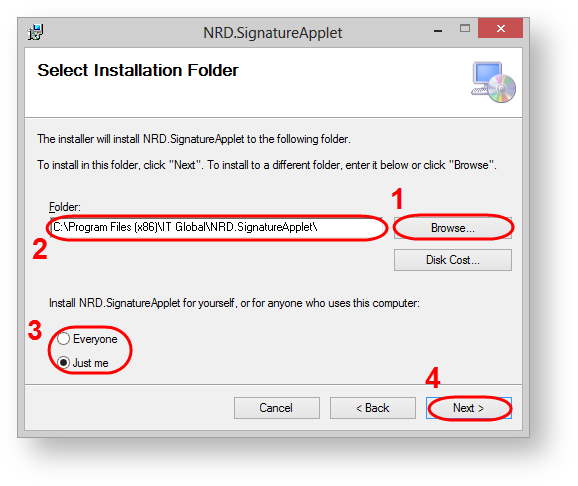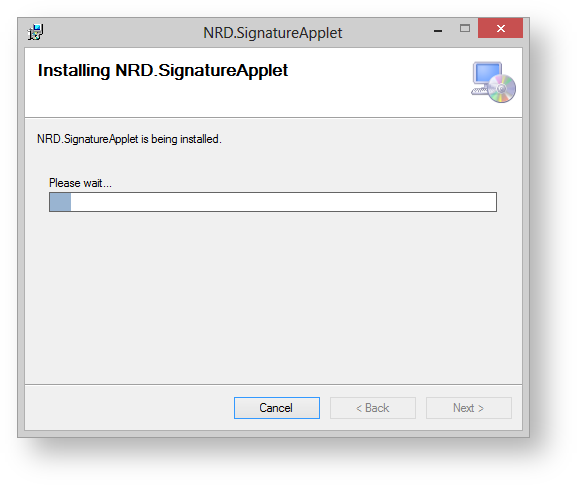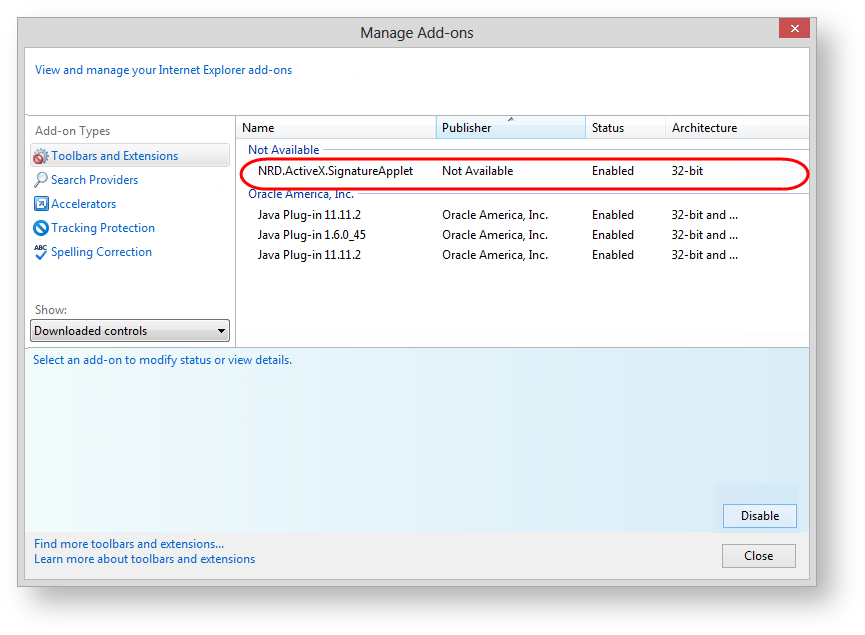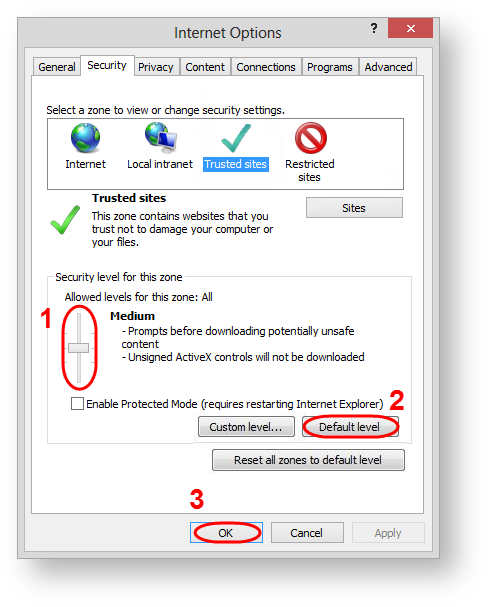The ActiveX plugin is an alternative to the Java API, which used to work with the means of cryptographic protection. ActiveX components are supported only in the Internet Explorer. In this regard you need to perform your browser's security settings for the correct operation of the ActiveX plugin. ActiveX is launched when the client connects to the Web-client. When using the ActiveX plugin, you do not need to download and install Java and Java API.
On this page:
ActiveX plugin installation
Setting up ActiveX plugin starts with running the NRD.ActiveX.Setup. This will open the Setup Wizard window, where you need to click Next (Fig. 1).
ActiveX plugin installation is carried out under an administrator account. You must have .NET Framework 4.5 installed on your computer.
Figure 1 – the Setup Wizard window
In the next window you need to:
click the Browse button to select the folder (Fig. 2,1) (by default: С:\Program Files (x86)\IT Global\ (Fig. 2,2));
- choose the type of installation (Fig. 2,3):
- Everyone – the plugin will run on this computer for all users;
- Just me – the plugin will run only for the current user.
- click the Next button (Fig. 2,4).
It's recommended to use default settings.
Figure 2 – select the folder
Then click Next to install components (Fig. 3).
Figure 3 – run the installation of components
The installation process might take a few minutes.
Figure 4 – installation progress
After completing the installation an information window will be displayed (Fig. 5), where you should click Close to exit the installation wizard.
Figure 5 – completing installation
Next, you need to perform the browser's security settings.
Internet Explorer settings
To run ActiveX plugin in Internet Explorer, you must:
- go to menu Tools → Internet Options → Security;
- select the Trusted sites (Fig. 6,1) and click the Sites (Fig. 6,2);
Figure 6 – go to security settings
- remove the switch box (Fig. 7,1) to add the URL with the http-protocol. URL with https-protocol are added regardless activated switch box or not;
Figure 7 – add the URL of the Web office in the list of trusted sites specify the URL of the Web-client (Fig. 7,2) and click the Add button (Fig. 7,3). As the result, the URL will be added to the list of trusted sites (Fig. 7,4);
If you plan to use Web-client as in the test and production environment, you must add the URL of the required versions:
- URL (beta version) –http://repository-dev.itglobal.ru/lkr/en
- URL (test) – https://repository1.itglobal.ru/lkr;
- URL (production):
- GOST – https://edog.nsd.ru/lkr;
- RSA – https://edor.nsd.ru/lkr.
- click the Close button (Fig. 7,5);
- click the ОК button in the Internet Option (Fig. 6,3).
Сhecking of the ActiveX plugin
After that you need to check that the ActiveX plugin is enabled. To do this:
- go to the Web-client site (see Authentication in the Web-client);
- go to browser menu Tools → Manage add-ons;
- find in the list the ActiveX plugin (Fig. 8). The status of the plugin must be Enabled. Click the Enable button, if the ActiveX plugin is disabled.
Figure 8 – plugin activation
As a result the ActiveX plugin will be used as the implementation of the EDS.
Possible errors
When you login into the Web-client the ActiveX plugin error occurs you need to perform an additional security settings. To do this:
- go to menu Tools → Internet Options → Security;
- set the security level to Medium (Fig. 9,1);
Figure 9 – security settings
- click the Default level button (Fig. 9,2) to return to the original browser settings. This button is active if you have changed Default security settings;
- click the OK button (Fig. 9,3).
Next, you need to repeat the login. Authorization in the Web-client must be completed successfully.








